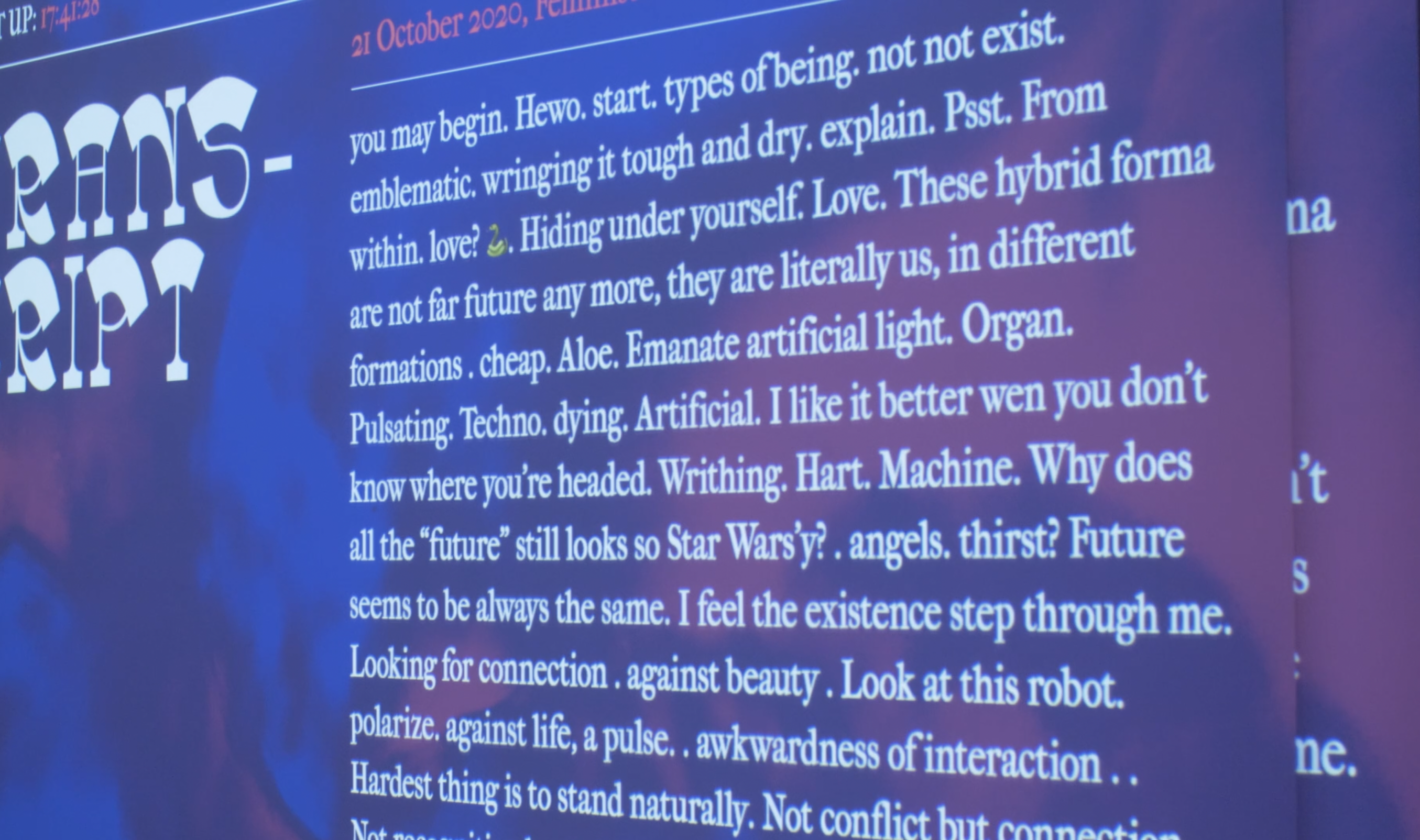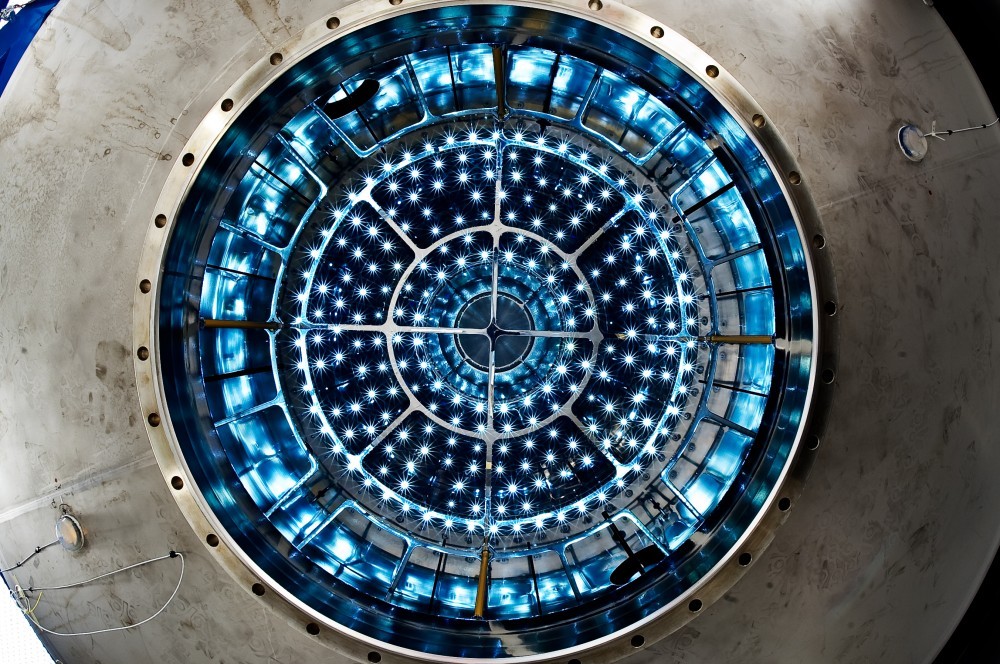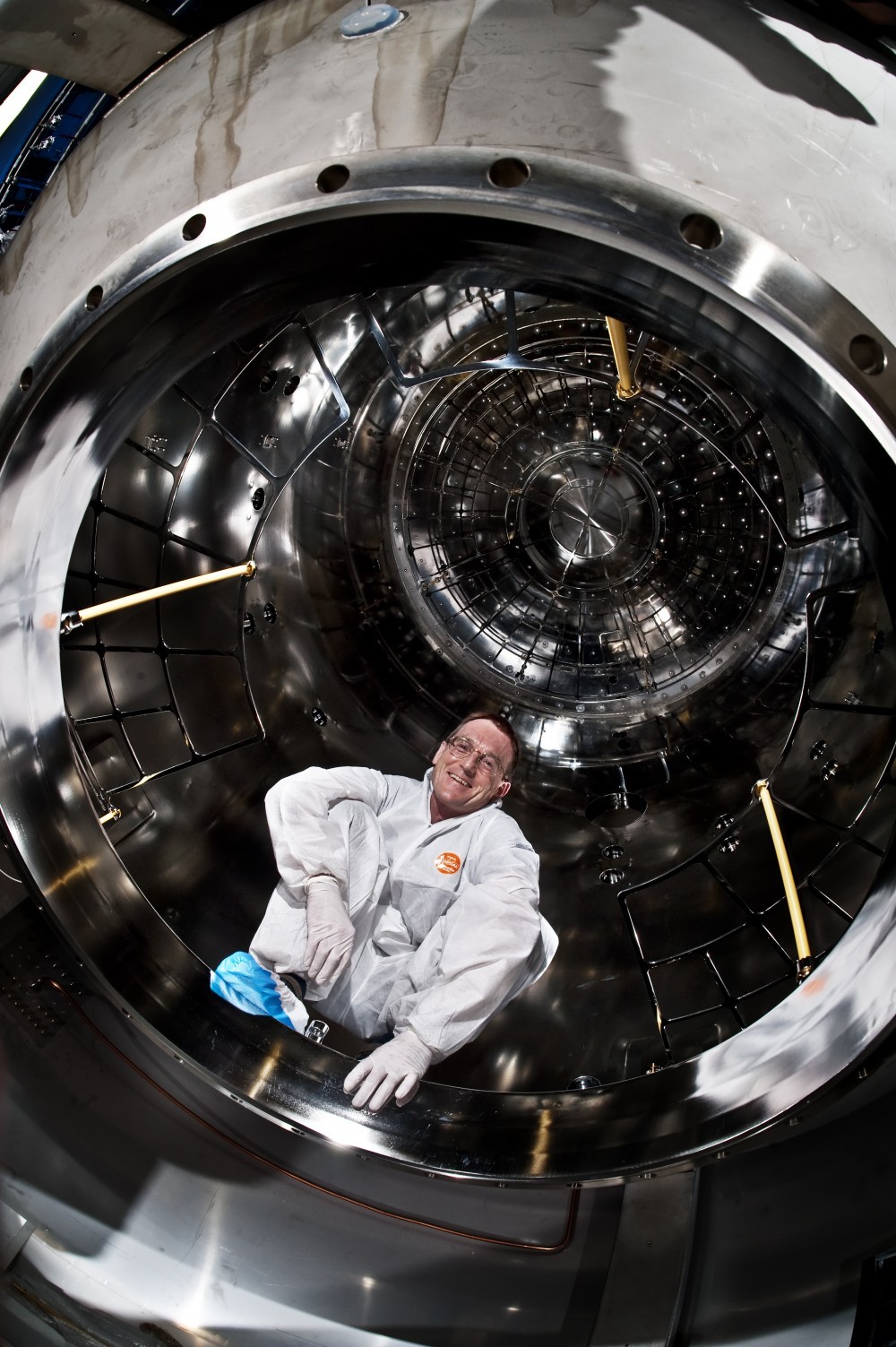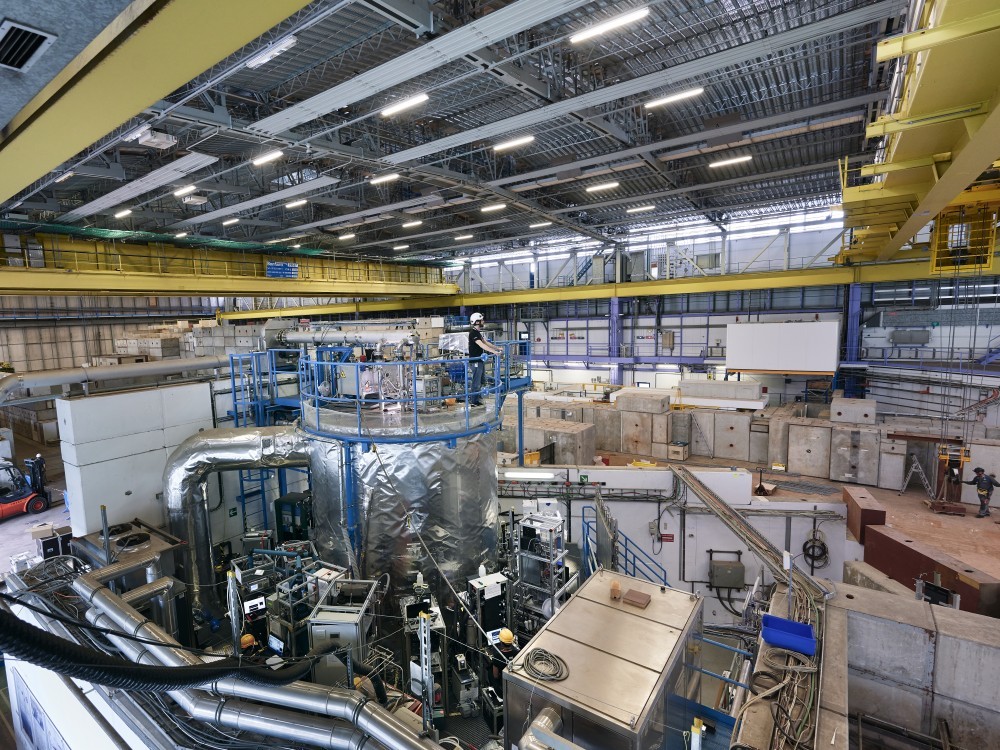
Dennis Dizon: 'I’m curious about encounters between complex forms and imagine what, or how, these would be'
As a recipient of an Honorary mention of the Collide Award, we spoke with about his on-going research exploring climate interventions at the intersections of technology and ecology, his interest in the CLOUD Experiment and his proposal too cool to burn.
Your proposal to Collide, too cool to burn, is part of a longer-term project that examines historical, existing and future techno-ecological “interventions” in Southeast Asia to mitigate global warming. How did this interest come about?
Geographically, Southeast Asia is one of the most vulnerable regions to extreme weather and rising sea levels; the Philippines, Myanmar and Thailand are consistently at the top of the long-term climate risk index.1 When I was growing up in Manila, heavy flooding would be common when a typhoon would hit. Sometimes, we’d scramble to move furniture in the apartment: lift them up before the water enters, wait for the storm to calm, then give the floor a scrub once the water recedes. And in lapses of delusion, I remember, as a kid, getting excited about these floods—I’d splash and wade, pretend to swim, as if in a pool, without a care in the world. But what I see now, looking back, was a desire to normalize the anxieties of those conditions. I think about my historical and existing relationships with changing climates, which drift me through the ecological across different capacities.
For the past few years, I’ve been revisiting this image (resurfaced by family members on Facebook), taken in front of an elementary school buried under volcanic mudflow, two years after the catastrophic 1991 Mount Pinatubo eruption. In my immediate conditions, I look at the photo now and see much more: threads of planetarization, (camp) naivety and nostalgia.

after the Mount Pinatubo eruption. San Antonio, Pampanga, Philippines, 1993. Courtesy the artist.
When Pinatubo erupted, it ejected an ash cloud that went up 22 miles (35 km) into the air. Sulfur dioxide reached the stratosphere, then a layer of aerosol particles formed, which absorbed and scattered incoming sunlight. Winds, then, distributed these aerosol particles globally, and for the next two years, the earth’s surface cooled by about 0.6℃ (1℉). Thirty years later, the scale and effects of the eruption have prompted geoengineering strategies, like spraying calcium carbonate in the atmosphere, to create a reflective barrier for sunlight, generate an artificial “volcanic winter” and manage global heating.2
More research still needs to happen with geoengineering, overall, but there’s been a push for these types of techno-fixes, including the development and deployment of technologies that would carry out the work. too cool to burn is an evolving set of questions on climate intervention—on governance and ethics, its financialization and opportunity costs, depoliticization and displaced memories—reimagining how these can be translated and communicated as a visual research project.
Each artist that comes to CERN brings different approaches. What attracts you to highly specialised scientific environments?
Techno-scientific environments are places of suspension—where there are attempts at managing matter and energy, pushing for tangibility, visibility and order among chaos. It can be rather serious, but I’m curious about what a “comedy of errors” might be in methodology or how this performs in a highly-specialized setting.
With even more increasing disparity from privatization and deregulation everywhere, the notion of access is also important. Democratized opportunity should be prioritized when integrating art in science and technology to bring in a wide range of positions and perspectives. With access, the critical need veers from the transparency of systems; the focus primarily becomes a playful reconfiguration of the structures of these systems.
I’m incredibly grateful for the opportunity to visit CERN and look forward to experiencing different thought processes, seeing how collaboration materializes from scientific uncertainty. I’m interested in what happens just before arriving at fact. I’m less interested in the pursuit of an answer, and instead, I am looking to contribute to the diversification of ecological thinking.
What do you expect from your Guest Artist visit at CERN and your exchanges with the scientific community? Are there any particular experiments you’re interested in?
I’m interested in the CLOUD experiment, part of which examines the physical and chemical properties of aerosol particles in cloud formation (particles like sulfuric acid droplets formed from Plinian volcanic eruptions). Most recently, I read that scientists on the team had discovered the presence of iodine aerosols in cloud-making. And hypothetically speaking, they say that iodine will accelerate the melting of polar sea ice and generate a “positive feedback loop” that could amplify extreme weather events.3
CLOUD also examines the climate sensitivity equation to narrow the gap in estimated rising temperatures using a chamber that creates, or mimics, the earth's atmosphere for these experiments. I’m particularly interested in seeing and experiencing the production of process in techno-scientific infrastructures and the conditions of the chamber, like pressure and control, when containing an ecological microcosm. I want to pull parallels from ecological processes, like seeding and growth, and how these can be applied to being-with nonhuman entities.
In all honesty, I’m not sure what to expect. But I’ve learned to go where the winds take me. About a decade ago, toward the end of a job interview, the interviewer and I got to talking about clouds. I can’t remember how we arrived at the topic or why—maybe it was a cloudy day. The conversation was casual, purely in admiration of clouds, without any intention. And ten years later, that admiration seems to have lasted; only now, it’s edging toward utter immersion.
Your work spans research, curation, visual arts, production and communication. Could you tell us a bit about your background and interests?
I think through the technological and ecological, which can be daunting but are also both extremely compelling and important. This curiosity continues to evolve, constantly provoked by the totality of an ecological crisis and the complexities of planetary-scale technologies. My research practice experiments with the poetics of these intersections—ecologies of delusion, networked oblivion, queer intimacies—and how these might transform, dictate or dominate individual and collective thoughts and behaviours. In practice, these manifest in forms of writing, modes of archiving, performative research and emerging media.
These interests have developed over time, largely informed by lived experience and immediate conditions. I spent a few years working at Google, both observing and embedding myself in the acceleration of platform technologies. For Google Arts & Culture, I worked on the digitisation program, which included the digitising of space (museums, mountains, sites of worship, street art murals, forests, etc.) and their cultural attachments—capturing the invisible and re-framing the archive as globalized data. In retrospect, I learned a lot: corporate standards of digital transformation, techno-utopian spectacle, soft culture as geopolitical currency.

My practice has since been influenced (and deprogrammed) by the Advanced Practices program (Curatorial / Knowledge, formerly) and the Visual Cultures department at Goldsmiths in London, where I completed my postgraduate studies. The AP program itself is fairly new, and the intention is to integrate practice-driven research into institutional research models (academic, techno-scientific, etc.). My time at Goldsmiths and in London was a critical return: it re-grounded urgencies toward a potential for other methodologies.
The techno-ecological might feel incomprehensible, but there’s a lot of room for poking and prodding; in practice, I like giving form to dissonance, irony, the absurd. I have an ongoing work called trails (2020-ongoing), which frames various climate intervention proposals, like those under Solar Radiation Management (SRM), as hallucinatory displacements. The atmosphere becomes a topological space when dimming the sun to mitigate the effects of global heating: a computational preservation of physical properties through alteration in stealth.

The actual work is in the dynamics of archiving: browsing patents of technologies for deployment, understanding AI in climate sensing, observing budding interest from the tech industry. trails follows uncertain yet near-immediate techno-ecological conditions, and the research process itself has become a creative responsibility.
You are the founder and curator of MATTERS OF, a platform rethinking digital curatorial formats, audience engagement, participation and collaboration in art and cultural programming. How and when did the platform start? What are your aims behind the project?
The concept for MATTERS OF was conceived during a residency at Furtherfield in London in late 2019. Furtherfield advances this constant reimagining of cooperation and collaboration for a more-than-human experience. They play with decentralising systems through different practice-based forms and curatorial formats, like Live-Action Role Play (LARP) and Decentralised Art Lab (DECAL). And these ideas have been influential in the creative process.
The project itself is in the early stages, but a beta version of a digital platform was implemented last year with Tallinn Art Hall for Beyond Matter. We invited participants to—without verbally speaking—create a ritual together via a real-time streaming and collaborative writing platform, responding to artist Patricia Dominguez’s film Madre Drone (2019). The hybrid workshop-screening was a bit of an experiment in communicating—finding out what a singular expression could be from collective ecological thinking. This version of MATTERS OF was an attempt to address the virtual condition: the potential of uncertainty among bodies interfacing with networked media, of information and narrative in process and form, the imaginary between human and nonhuman (algorithms, machine, nonhuman animals and other entities).

Since lockdown a year ago, the arts and culture sector really amplified the digitisation of (public) programming as an immediate response to the pandemic. There’s been a forced shift in the industry. But how do we also address the accelerated shift in culture? I wanted to reconceptualize absence, or the sudden loss in gathering, the impersonal intimacies among bodies and the fluidity of contact. I’m following through with this thinking and want to continue experimenting with these types of engagements and entanglements in the future.
In your recent essay Tactical Delusions in an Age of Crisis for ADJACENT Journal and your programme Matters of Concern: On Tactical Delusions, you approach alternative ways of communicating about the ecological crisis through the idea of Tactical Delusions. Could you tell us more about this concept?
Several years ago, the intensity in climate change reporting caught up with me, so part of my early research examined the circulation and distribution of climate change information online. I wanted to align media and communication and concepts of the ecological with the varying scales of crisis; how realities and experiences of climate change combined with the dynamics of information transfer and the force of manufactured narratives could create affective responses (be it climate change denial, climate despair or anxiety, etc.).
When I was reading up on delusion, I found this clinical case, from 2008, of what seems to be the first recorded climate-related delusion: in Australia, a 17-year-old who—having come across information online—stopped drinking water, believing that millions of people would die because their own share would exhaust the global water supply.4 In their mental state, the teenager had this urgency to take extreme action. There were deprivation and destruction to their body, but the body was, first, a site of inquiry for an excess in imaginary.
Tactical delusions exploit human exceptionalism for an ecological engagement that’s out of the ordinary. It rethinks positionality. It’s another way of communicating and relating between humans, with nonhumans. If you speak to your plants or even had an inkling to try—that’s a tactical delusion.
How would you describe the relationship between climate science and indigenous systems of knowledge in your practice?
I’m curious about encounters between complex forms and imagine what, or how, these would be. Cordial, probably clunky. They arrive at complexity and meet with uncertainty. Words are lost. Expectations are muddled. There’s tension from urgency.
You may have come across the IPCC’s warning to limit rising temperatures to 1.5℃, for example.5 Temperatures well beyond this could push past a “tipping point” toward an ecological collapse. In climate modeling, there’s an equation for climate sensitivity that estimates, quantitatively, the range of temperature to maintain Earth’s equilibrium, or how much it will warm or cool based on changes in the climate system, like CO2 emissions. But how do variability, unpredictability and uncertainty translate into indigenous truths? What is affect in science? Set aside knowledge, for a bit—what’s the language for feeling?
Indigeneity spans across the world, across lifeforms and across timescales. From the position of the human, traditions, beliefs and practices are, generally, dispersed through oral communication. But there are also violent colonial histories, distinct cultures and various conditions surrounding land rights and forced migration, racism and stigmatisation, destruction and brutality. It’s an obligation to avoid homogenizing or universalizing locality, and in this expanse, I try to think through contrasts and determine what difference is in concepts of balance.
Methods in climate science and practices of indigenous knowledge encounter at the transfer of information; my approach extracts the poetics from these meetings. I frame linear thinking with nonlinear narratives—in states of transition, mutation or formation.
What role do these projects, which bring together different fields of knowledge and perspectives, play in redesigning equitable climate futures?
Redesigning an equitable climate future is a collective responsibility. Climate intervention needs interrogation as topics of governance and risk surface in contemporary environmentalism. The impact is disproportionate toward marginalized, forgotten and disappearing communities, so any (re-)design, first, requires a recognition of the past and remaining colonial violence—structures of coloniality built into existing governing systems.
The project is an entry point into reframing climate through emerging aesthetics, in constant dialogue with and acknowledgment of the politics inherent in an ecological crisis. At the intersection of the techno-ecological, too cool to burn extracts value in the totality of an ecological crisis, examining the potential of climate discourse: climate as computational poetics, and interchangeably, as poetic computation. In climate intervention, the atmosphere becomes part of a climate infrastructure, laid as a codified canvas with layers of control. And I’m observing how scales of being-with crisis can change the way we think of climate now toward a future.

You know, in casual conversations, the “climate” tends to be a go-to introductory topic of topics? How’s the weather? What’s the climate like over there? It’s so hot. Or humid. Or hot and humid…. A lot of people find these trivial but look above and burrow underneath. Climate isn’t exclusive to weather; there’s a lot more happening and much more to discuss. It’s a type of mediation—a social, planetary process—that warrants a more critical looking-into.
Interview by Ana Prendes, content manager at Arts at CERN
1 David Eckstein, Vera Künzel, Laura Schäfer, GLOBAL CLIMATE RISK INDEX 2021 (Bonn, Berlin: Germanwatch e.V., 2021), 15.
2 Jeff Tollefson, “First sun-dimming experiment will test a way to cool Earth”, Nature, November 27, 2018.
3 Max Kozlov, “Cloud-Making Aerosol Could Devastate Polar Sea Ice”, Quanta Magazine, February 23, 2021.
4 Robert Salo and Joshua Wolf, “Water, Water, Everywhere, Nor any Drop to Drink: Climate Change Delusion”, Australian & New Zealand Journal of Psychiatry 42, no. 4 (January 2008): 350.
5“Global Warming of 1.5 ºC”, Special Report, Intergovernmental Panel on Climate Change (IPCC), accessed 15 March 2021.


